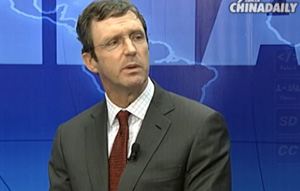Differentiation is key to action on climate
Updated: 2013-11-27 06:39
By Mukul Sanwal (China Daily USA)
|
|||||||||
The just concluded climate negotiations in Warsaw have been welcomed by developing countries as the principle of differentiation has been acknowledged, though they must now ensure it is included in the new treaty.
Differentiation in the Climate Convention is based on three considerations.
First, while all countries have to take "measures", the developed countries wanted the developing countries to make "commitments", now all countries have agreed to make "contributions".
Second the sacrosanct principle of "common but differentiated responsibilities and respective capabilities", which helped to maintain differentiation over the past 20 years, has been redefined to reflect the current reality of growing emissions in both the developing and developed countries.
The third element of differentiation in the convention will now be the focus of negotiations in 2014 when "national preparations" are discussed at the multilateral level. The convention established a critical differentiation between the assessment of aggregated effects of measures taken by developing countries and review of emissions reduction commitments in individual developed countries. That is why avoiding reference to "commitments", voluntary or otherwise, is an achievement.
Emissions of carbon dioxide are the symptom of the distribution and use of natural resources, not their scarcity. We are faced with three interrelated global limits the carbon budget, consumption by the rich and comparable standards of living for the poor. How these limits are approached will depend on what is regarded as essential for human well-being.
The nature of industrialized societies urbanization is the major driving force for the increasing demand for materials and energy. Already cities produce three-fourths of global greenhouse gas emissions, which are directly related to household consumption shelter, mobility and food.
Urbanization involves two transitions, the establishment of infrastructure, or consumption of material resources, as a necessary part of the process of economic development, and later higher incomes support changes in consumption patterns, that are largely of non-material goods and services based on specific lifestyles. Both are direct inputs to human well-being.
An assessment of the patterns, trends and drivers of the activities that led to the utilization of the global carbon budget over the previous 100 years shows that emissions of carbon dioxide doubled between 1920 and 1950 when full electrification was completed in the developed countries; they had doubled again by 1970 when three-fourths of their population had moved to urban areas; and they doubled again thanks to the consumption patterns of their urban middle class only starting to stabilize around 2000. These trends must be recognized by the multilateral system when considering the emissions of developing countries.
How do developing countries ensure that the new climate regime will be a genuine attempt to make the pie bigger rather than enable some to seize a larger slice?
Developing country policymakers will do well to go through the World Social Science Report 2013: Changing Global Environments of the United Nations Education, Scientific and Cultural Organization released while the Warsaw Conference was in session. The report concludes that, "climate and global environmental change must be fundamentally reframed from a physical to a social problem".
Recent analysis is focusing on consumption patterns in cities as the driver of global emissions. For example, carbon dioxide emissions from transportation are expected to be responsible for half of global emissions by 2050, contributing more than the use of coal to generate electricity. Similarly, while global livestock production is responsible for 15 percent of greenhouse gas emissions, the carbon intensity is highest for beef, which contributes half of those emissions, yet beef consumption is low in developing countries. Energy efficiency has the potential to reduce half of global emissions till 2050, so it is these trends that need to be modified, not the growth of developing countries.
The developing country position should be that the problem the world is now facing is largely because the developed countries did not take adequate measures to cut their emissions from 1990 to 2012, otherwise there would have been models for developing countries to follow as they industrialized and their populations shifted to cities. Now, developing countries have to define these steps and it will take time. For developing countries the issue is not emissions reduction but rather modifying growth pathways.
What should be the approach to ensure that peer review of the information provided by developing countries recognizes the extent of poverty, their relatively smaller contributions to global emissions and the adverse impacts of climate change on developing countries?
This will require a new framework for peer review of the information. First, developing countries should state that their electrification, urbanization and middle class levels of well-being will be attained using a lesser per capita share of the global carbon resources than that of developed countries.
Second, they should stress that the peer review should focus on consumption patterns and set global standards for high emissions areas like shelter, food and mobility, as benchmarks to be achieved by all countries.
Third, no reference to annual emissions reductions can be made until developing countries achieve stabilized levels of well-being, as has happened in developed countries.
Fourth, the utilization of the carbon budget between 1850 and 2050 provides a means to compare the efforts of all countries, and the Intergovernmental Panel on Climate Change, in its most recent report, has suggested that global monitoring be based on the carbon budget.
The author is a former advisor to the United Nations Environment Programme.
(China Daily USA11/27/2013 page11)
Most Viewed
Editor's Picks

|

|

|

|

|

|
Today's Top News
Ancient Chinese philosophies are eye-opening today
Tencent anti-monopoly suit trial starts in Beijing
PetroChina sued in US court
US B-52 in air zone monitored
Foreign auto makers change sales strategies
Court rejects appeal of military singers' son
Brooklyn, Shanghai hook up
Air zone 'not to affect routine flights'
US Weekly

|

|














